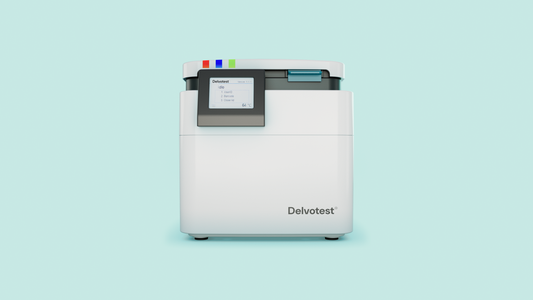


Imagine pouring days of hard work and care into your milk, only to have your bulk tank rejected—money down the drain, reputation on the line. We’ve all heard it before, a familiar tale among farmers that usually starts with, “My bulk tank got rejected..."
… “My bulk tank got rejected, I lost a lot of money and was given a hefty penalty on top of that. I don’t know what I did wrong: I had a sick animal that recovered, I waited the advised withdrawal time, but apparently that wasn’t enough. How can I avoid this from happening again?”
It's the kind of trouble no farmer should have to face. So let’s talk about what's really going on and how you can steer clear of this headache.
Every farmer faces this at some point: you've got a sick animal, you treat it with care, and then you count down those withdrawal time hours that you were advised to follow. But what exactly is this 'withdrawal time'? Put simple, it’s the time we’re told to wait after treating an animal with antibiotics — a ‘safety window’ set to ensure milk from a treated animal is kept apart, as unsafe levels of antibiotic residue doesn’t make their way into your bulk milk. Pharmaceutical companies who develop these antibiotics pour a ton of research into deciding how long these windows should be, aiming to keep both our animals and our milk safe, and they do a really good job in determining these withdrawal times.
But here's the fundamental problem. Those withdrawal times? They're rooted in solid science, aiming to fit all, yet they can't tailor to the unique needs of each individual animal under your care. They offer a solid guideline, but diving deeper into the specifics of your farm and recognising when an animal faces a unique challenge—that’s ultimately what really ensures safety. It’s this blend of following scientific guidelines and applying detailed knowledge of your own farm that steers you right. Just to give you an idea, here are some examples of the circumstances which can make things tricky:
Now take a look at the picture below. It's like a quick guide to what we're aiming for after we treat our animals. That straight line marked 'Advised withdrawal time based on healthy cows'? That's our standard withdrawal time to let antibiotics clear out before milk goes into the tank. The green line at the bottom is crucial. That's the ‘MRL’ (Maximum Residue Limit). It's the line we don't want to cross to make sure our milk meets the safety standards before we sell it. And the dotted line that swoops down towards it? That shows how antibiotic levels drops over time in an ideal situation, after a single treatment, assuming everything goes perfectly, and the animal is excreting milk at the correct rate.

Withdrawal time: how things are supposed to go
But it’s all about context — understanding local realities is key. The next picture shows what this can sometimes mean in practice:

Withdrawal time: how things sometimes turn out to be
Those extra lines? They represent the different ways antibiotics can hang around longer than we'd like, based on what's actually happening on the farm. For instance, if a cow's mammary gland is clogged or it calves early, those antibiotics might not clear out as fast as we'd expect. Then there’s that big spike after the red line, showing how antibiotic levels can increase again if we have to treat the animal a second time. Well, this is the real world of farming, and this is why sticking to just the standard withdrawal time doesn't always account for these kinds of hiccups.
Leading a top-notch farm means taking control and leaving nothing to chance. After you’ve followed the advised withdrawal time and your animal has recovered, there’s one final step that sets apart the best from the rest: Test Every Treated Animal (TETA). This isn’t about doubting the guidelines; it’s about knowing your milk is safe before it hits the bulk tank. Testing is your peace of mind, your final check to ensure your milk is clean, safe, and ready for the next step. This is what elevates your farm from good to great—proactive, evidence-based management that keeps you a step ahead. After all, it’s your farm, your legacy, your choice to be the best.
You’ve probably noticed we haven’t mentioned Delvotest® a single time up until now (!) Curious about why combining TETA with Delvotest® brings you from ‘Great’ to ‘Greatest’? Check out our next Knowledge Centre article where we tell you all about it!